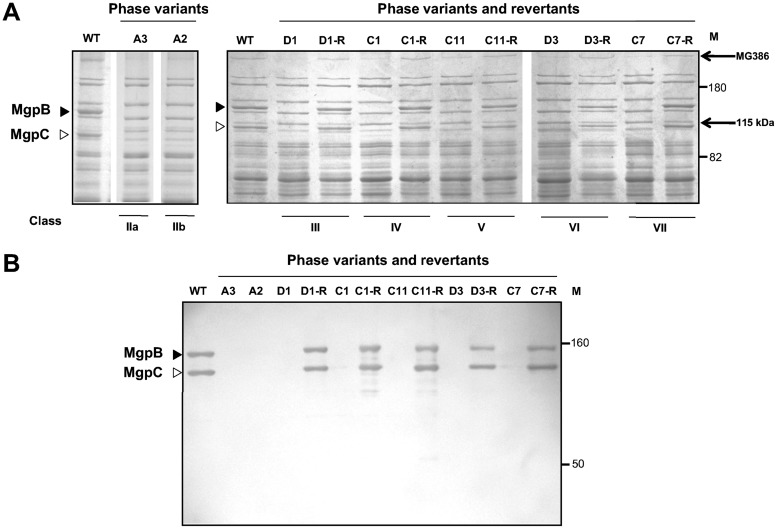FIG 1.
(A) Protein profiles of representative phase variants and revertants. Whole-cell lysates (10 μg of protein) of M. genitalium strain G37-C were electrophoresed through 8% SDS-polyacrylamide gels and stained with Coomassie blue. The profiles obtained with lysates for transposon-tagged phase variants D1, C1, C11, D3, and C7 and revertants are shown here and are identical to those obtained with lysates for untagged phase variants (see Fig. S1 in the supplemental material); the A3 and A2 lysates were from untagged phase variants. The MgpB (filled triangles) and MgpC (open triangles) protein bands were found in wild-type (WT) extracts but absent in each phase variant. The reduced expression of MG386 (P200) and the appearance of a 115-kDa unknown protein are indicated on the right. Molecular mass standards (in kilodaltons; lanes M) are marked. The protein profiles of all 40 phase variants are shown in Fig. S1. (B) Immunoblots of M. genitalium whole-cell lysates. MgpB and MgpC were detected by combining rabbit serum specific for each protein. MgpB and MgpC expression was lost from each phase variant and restored in revertants to levels similar to those in wild-type M. genitalium.

